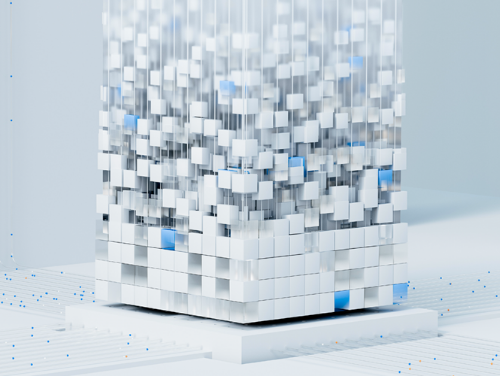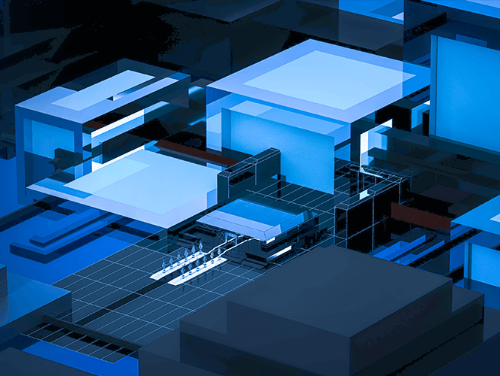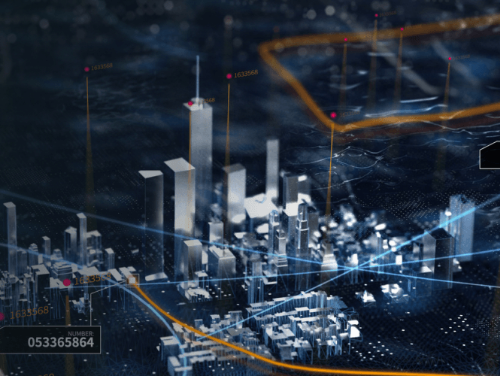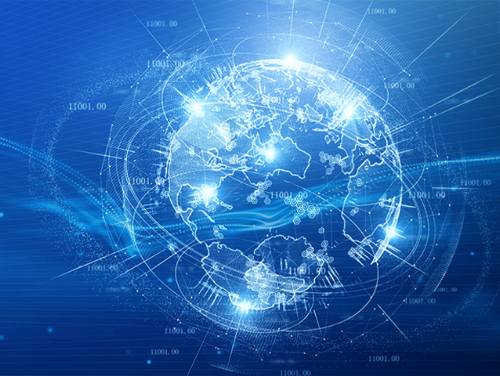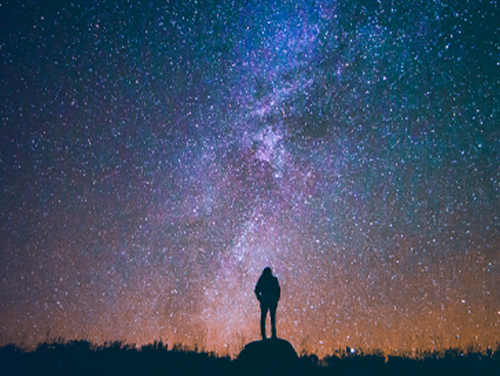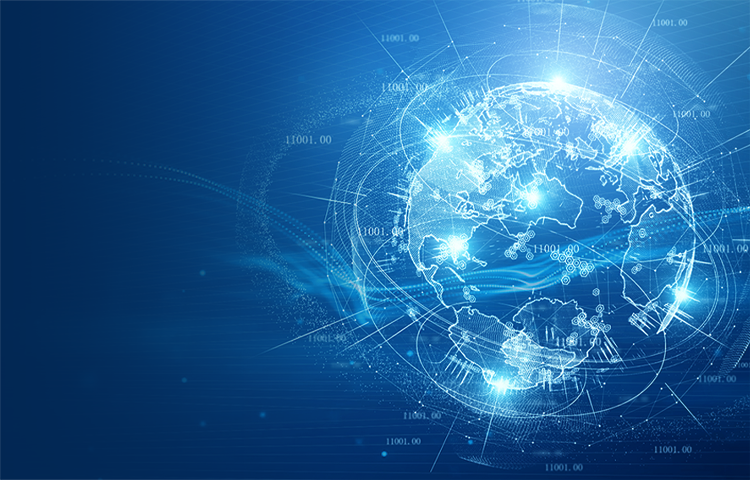This article is reprinted from the author of "AI Digging Chronicles" | edited by Li Xi | edited by Yu Kuai

On December 11, 2021, the 4th China Artificial Intelligence Security Summit, hosted by Lei Feng Network&AI Digging Jinzhi, was officially held in Shenzhen.
The theme of this summit is "Breakthrough of the Digital City Era". At the meeting, 14 benchmark enterprises representing the city's AIoT will share the business philosophy and technology application methodology for welcoming the digital city with on-site and online audiences.
During the morning speech session, Duan Weizhi, Vice President of Minivision Technology, delivered a wonderful speech to the summit.
In Duan Weizhi's view, from the perspective of driving factors, China's smart city construction has gone through four stages:
Firstly, driven by industry applications. The main participants in this stage are foreign high-tech enterprises, and the construction method is to solve individual problems through a single system;
Secondly, driven by 4G and cloud computing, the country has begun to carry out key project construction, and intelligence is gradually starting;
Thirdly, driven by technologies such as artificial intelligence, big data, and 5G, the state has begun to take the lead, with various ministries and commissions collaborating, and the industry promoting the unification of various systems, gradually forming the urban brain.
At present, resources, technology, information, and elements are fully digitized, and large platforms are beginning to move towards intensification, truly moving towards a digital stage of integrated innovation.
In this process, artificial intelligence, as the connection between the physical and digital worlds, is an essential part. But at the same time, the implementation of artificial intelligence is also very challenging.
Duan Weizhi stated that to achieve the implementation of artificial intelligence, one must have industry experience and understand business scenarios; Secondly, cultivate and train repeatedly; The third is strong collaboration across the entire industry chain, involving computing power, algorithms, data, platforms, applications, etc. This is a very complex process.
Based on this, Duan Weizhi believes that the development of artificial intelligence in China will inevitably bring two results:
A: The upgrade from the physical world to the digital world will inevitably involve a partial transformation, followed by a partial transformation;
B: Only by truly achieving large-scale production and application of a large number of algorithms can urban digital transformation be truly completed.
The following is the full text of Duan Weizhi's speech, which has been organized and edited by Lei Feng's AI Digging Records without changing its original intention:
Smart City Enters the Digital Driven Era
The theme for today's sharing is "A New Step in Smart Vision, Starting from a Full Scene Intelligent Base".
The construction of smart cities in China has been going through several stages for 13 years since 2008.
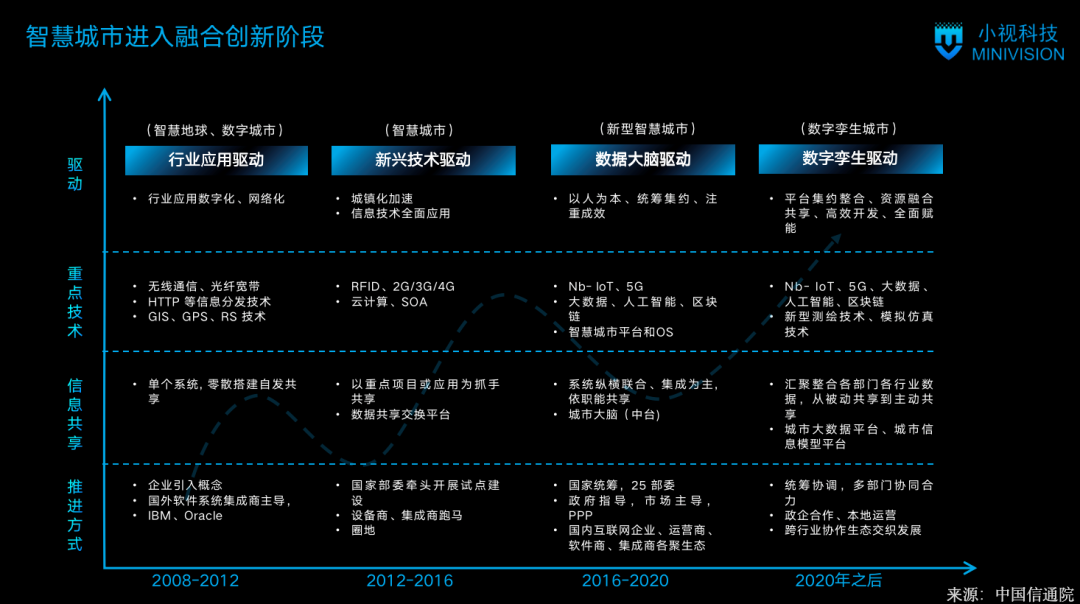
Firstly, driven by industry applications. The main participants are foreign high-tech enterprises, and the construction method is to solve individual problems through a single system.
Secondly, driven by 4G and cloud computing, the country has begun to carry out key project construction, and we have begun to promote the development of intelligence in China.
Thirdly, driven by technologies such as artificial intelligence, big data, and 5G, the state has taken the lead and various ministries have joined forces. We have started to promote the unification of various systems, and the urban brain has gradually formed.
Starting from 2020, we have entered a new stage, starting from the physical world and truly moving towards the digital world. At this stage, the resources, technology, information, and elements of the physical world are fully digitized, and large platforms are beginning to move towards intensification and towards a digital stage of integrated innovation.
In this process, artificial intelligence, especially AI algorithms, as important connections and transformation agents between the physical and digital worlds, are also an essential part. The application of artificial intelligence is a very challenging path, originating from the fact that artificial intelligence naturally has two genes. Firstly, it must resemble a certain organ in humans, such as the eyes and ears, and be able to see and understand; Hear and understand. The second is to be like a human brain, able to analyze and make decisions, just like educating a machine from being able to see to being able to understand, which is a very complex process.
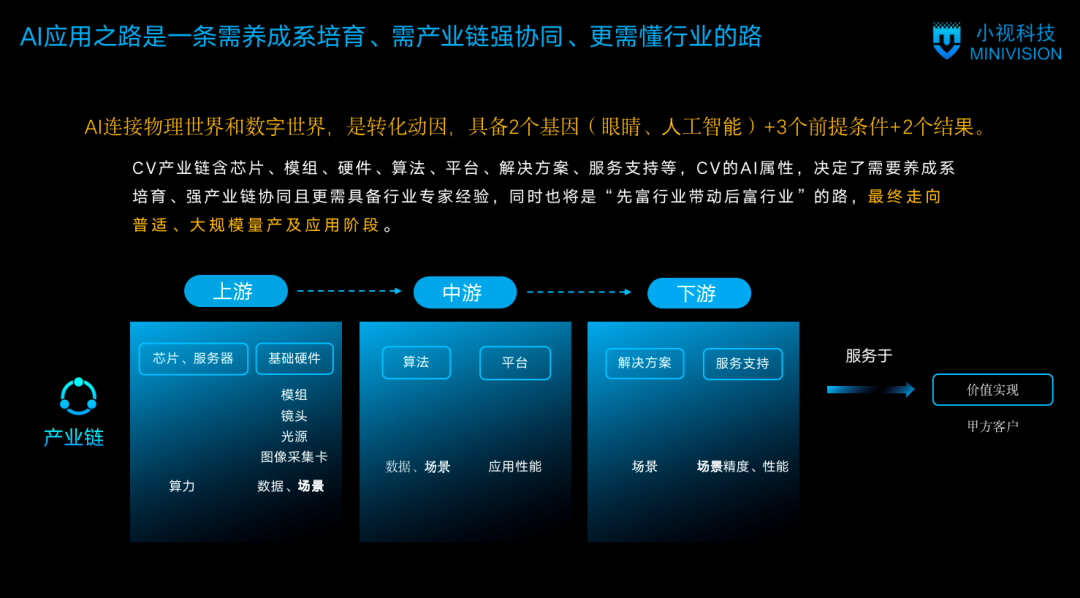
Based on these two genes, the landing of the entire artificial intelligence must have three prerequisites.
Firstly, it requires industry expert experience, understanding this scenario, understanding what business problems are, and knowing how to solve them;
The second is to cultivate and cultivate, just like cultivating children, cultivating robots also requires repeated education;
The third is the need for full industry chain collaboration, from chips, computing power, algorithms, scenarios, industry experts, strong collaboration, and going through this complex process.
It is precisely because of this complex process that the development of artificial intelligence in China will inevitably bring two results. One is the transformation from the physical world to the digital world, where some industries will undergo transformation first and others will undergo transformation later.
The second is to truly achieve large-scale production and application of a large number of algorithms, truly moving from the physical world to the digital world. Everyone can also feel that many artificial intelligence nowadays cannot do artificial intelligence at all. From "artificial" to "artificial intelligence disability", to "artificial semi intelligence", to "artificial full intelligence", this process will greatly consume our investment.
Minivision Technology's New Strategy and Positioning: Big AI and Big Applications
What is the positioning of Minivision Technology in it? We know that the country has recently made very important instructions for the entire digital economy, with the 19th National Congress, 14th Five Year Plan, and 2035 all mentioning important deployments of the digital economy, digital industry, and digital ecology. As a newly growing AI company, Xiaoshi Technology aims to apply AI to the digital world in a universal and large-scale manner, positioning Big AI as our intelligent base and doing the hardest part of the work. At the same time, expand the application of some key industries, and the new definition of the entire strategy is big AI+big applications.
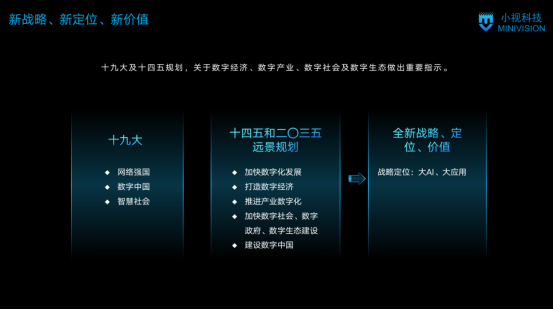
We build two major bases and three major service platforms.
There are two main bases, one is the artificial intelligence core technology production platform, and the second is the AIoT digital intelligence service management platform.

Artificial intelligence core technology production platform, from data cleaning, annotation, model training, publishing, one-stop, pipeline algorithm production factory;
The AIoT digital intelligence service management platform mainly consists of a series of service capability components such as big data perception and algorithm warehouse, constructing the three major AI capabilities of "digital city, digital industry, and digital life". Three major AI capability service platforms have been defined for digital cities, industries, and daily life, including smart visual scene service platforms, enterprise artificial intelligence service platforms, and daily life artificial intelligence service platforms. Select the scenarios that are currently the fastest to industrialize to define AI capabilities and assist in the true digital upgrading of the industry.

During the entire digital upgrade process, a collaborative closed-loop system is created for the five sectors of AI, algorithms, technology, products, and solution applications. It is connected downwards to management and data aggregation, and can rely on strong AI customization capabilities to collaborate with various industry experts to define industry solutions for different large-scale applications.

There are two very important things in this process. One is the large AI platform, which, as an intelligent base, requires the collaboration of a large number of algorithm talents, algorithm engineers, algorithm laboratories, and algorithm production partners. In addition, it is necessary to integrate a large number of AI application developers, intelligent hardware vendors, and system solution providers to do a large number of applications. This process goes from "AI as a service" to "software as a service" to the final "value as a service". Ultimately, we believe that it should be "value as AI" to empower customers for industrial digital upgrading.

At present, our main definition is driven by the digital transformation of government and key industries, such as building smart city artificial intelligence digital bases and enterprise artificial intelligence digital platforms. We select key cities and industries to cooperate with leading companies to build mainstream artificial intelligence service platforms, and drive more small and medium-sized industries to provide services for thousands of industries.

We have collaborated with a large number of partners, mainly in a regional+industry manner. Over the past six years, we have implemented nearly 140 services in eight major scenarios. Horizontally, it is possible to continuously expand various scenarios and industries on the basis of the three major service platforms mentioned earlier, and vertically, achieve full stack AI capabilities for various segmented scenarios.
How can key industries undergo intelligent transformation?
For example, in a smart city, there is an urban governance system that may require 50 algorithms to fully achieve artificial intelligence and digitization of urban governance. From the implementation of 2-3 cases, we can achieve full stack development of all 50 algorithms. In the future, customers can use it as needed throughout our entire AI capability system. We will expand our industry direction horizontally, continuously improve our AI capabilities vertically, and strive to achieve full stack AI capabilities for any segmented scenario, covering almost all aspects from general algorithms to medium long tail algorithms.
Let's give three examples.
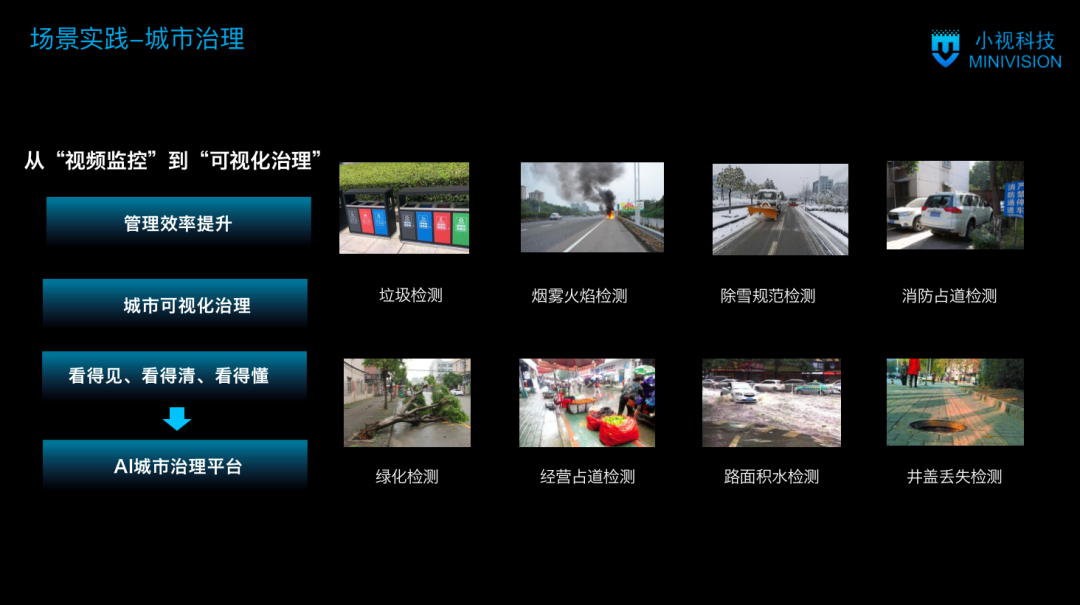
1. Urban governance. We installed 3500 cameras in one district of a certain city, and later replicated 25000 cameras in six districts. Originally, urban management conducted quantitative patrols through patrol vehicles and urban management personnel. After loading AI capabilities, it changed from quantitative patrols to on-demand patrols, engaging in post management to timely processing, from "seeing" to "understanding", truly achieving AI urban governance.
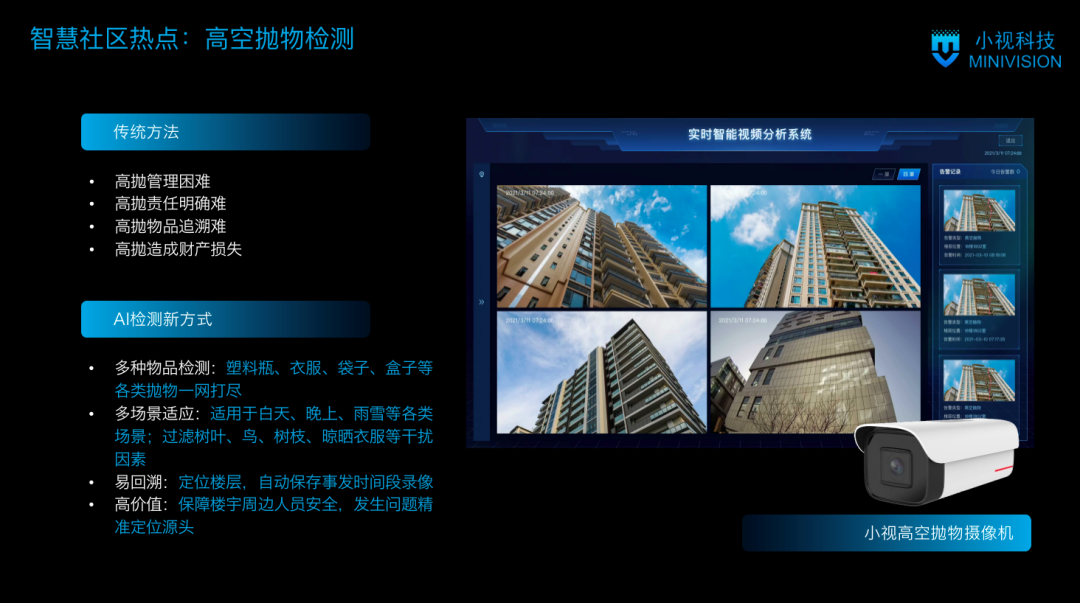
2. Smart community hotspot: high-altitude parabolic detection. We have jointly defined with Huawei SDC cameras. Currently, this scene has achieved nearly 10000 camera coverage, and the main solutions are accident tracking and timely reminders in advance. The biggest technical challenge is to catch real people throwing objects during the day and night, and achieve anti-interference. We participate in the basic standards for high-altitude throwing in China, and have achieved good results in all mainstream tests.
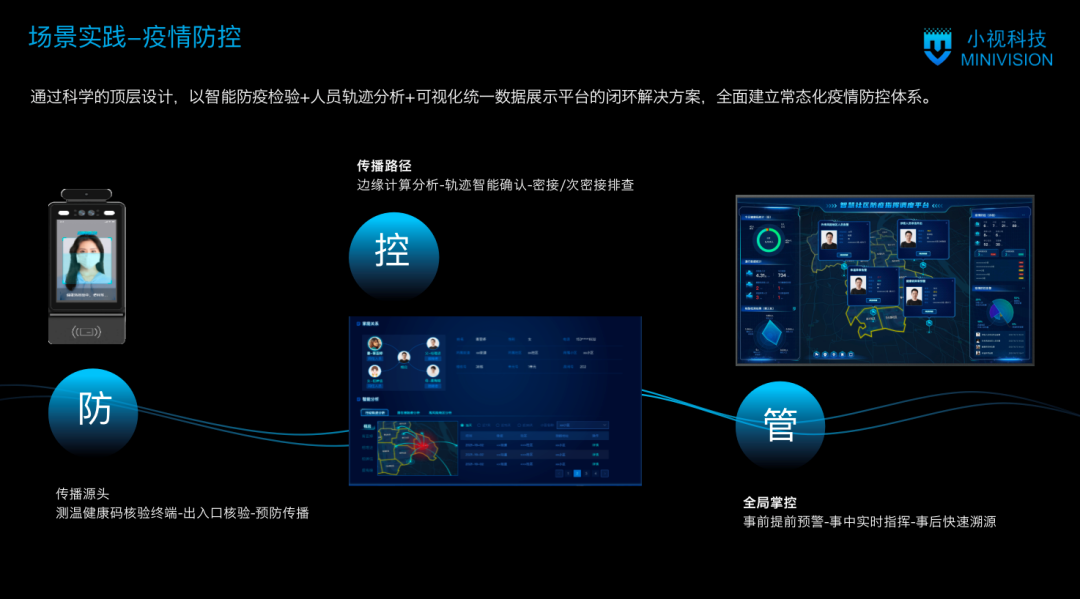
3. Scene practice, intelligent epidemic prevention. We have an integrated epidemic prevention command and dispatch platform for prevention, control, and management, which can quickly search for close contacts and sub close contacts from facial recognition with masks worn at each entrance and exit, as well as facial recognition with obstructions. At present, we cover a wide range of scenarios in smart epidemic prevention, including communities, governments, parks, and transportation stations, with over 10000 hub points.
Finally, let me share with you Minivision Technology. Minivision Technology was established in 2015 and headquartered in Nanjing. Within six years, its current industry scale has been listed among several companies recently, and it is an AI enterprise with relatively good revenue scale.
At present, our business covers 4 overseas countries and 11 provinces and 33 cities in China. The company has deployed several smart city projects, nearly 10000 smart communities, hundreds of government parks and transportation stations, tens of thousands of construction sites, and over 200 hospitals in a total of hundreds of thousands of locations across the country, with a total of 15 million service personnel and over 3 billion annual visitors.
Our overall positioning is to compact the AI base for flexible and rapid customization. Horizontally, the products are constantly enriched, adapting to mainstream domestic chips and intelligent hardware; Vertical, full stack AI capability.
Finally, we hope to position ourselves as big AI and big applications, and work together with our partners to promote the rapid development of the digital economy.

